Submitted by WA Contents
AZL Architects renovates old kiln building with concrete and brick arches in the middle of a forest
China Architecture News - Jun 14, 2019 - 04:58 29193 views
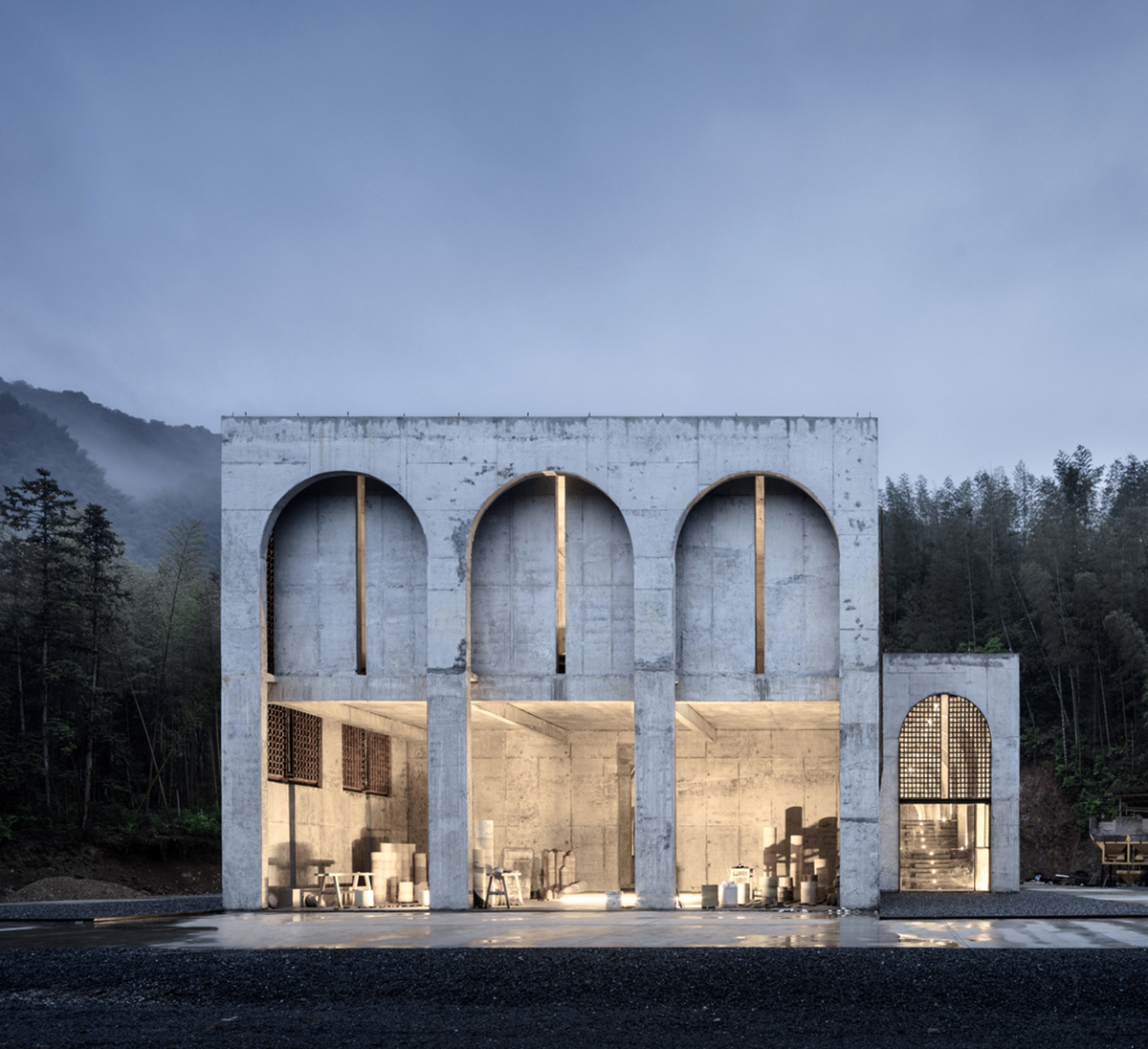
Chinese architecture firm AZL Architects has renovated the traditional kiln building by using concrete and brick arches in the middle of a forest in Jingdezhen, Jiangxi Province, China.
Dubbed as BingDing Wood Kiln Factory, the building is located in Fuliang’s Qiancheng Village, and the building is less than an hour’s drive from the urban area of Jingdezhen.
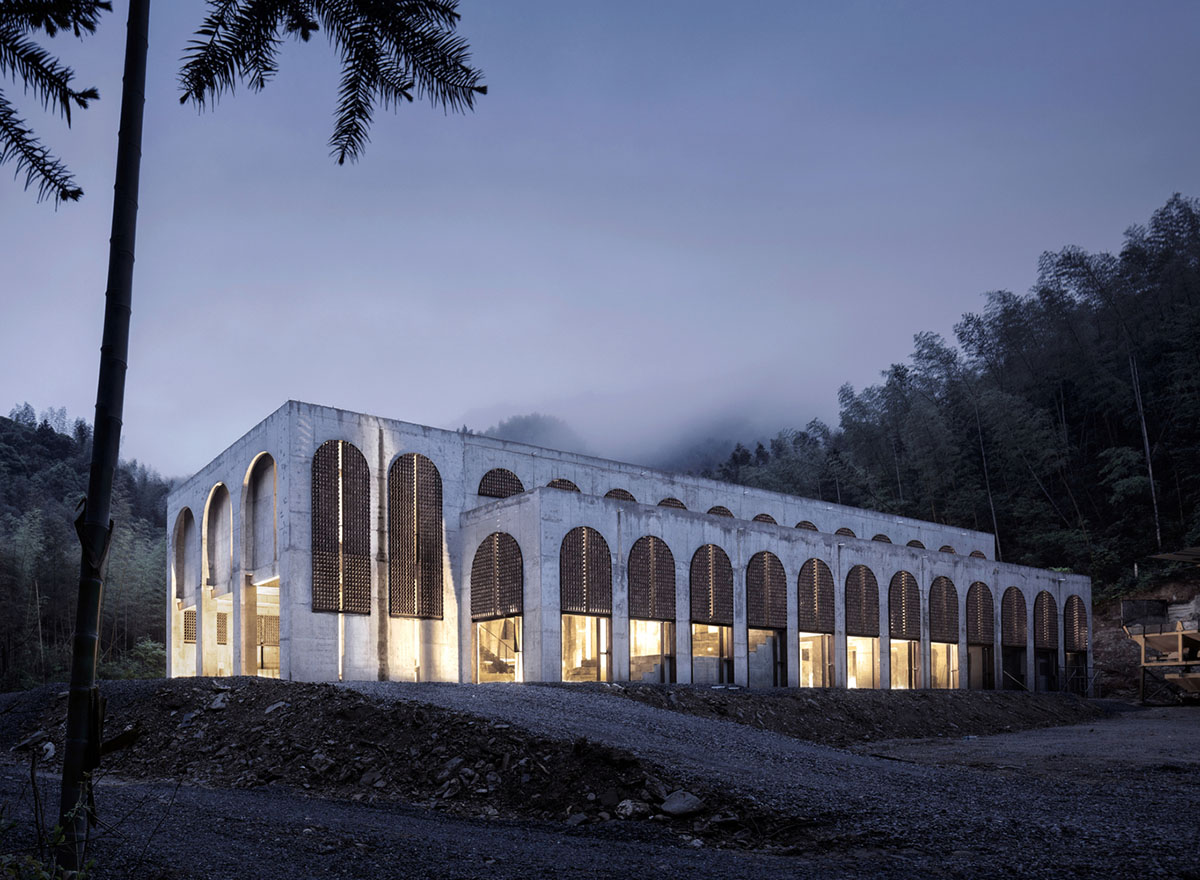
Image © Li Yao
The county of Fuliang was once under the administrative jurisdiction of Jingdezhen, the Porcelain Capital of China, and is known as the origin of the Porcelain Capital. The Gaoling Ancient Mine Ruins in Fuliang is also a holy place for international ceramics culture.
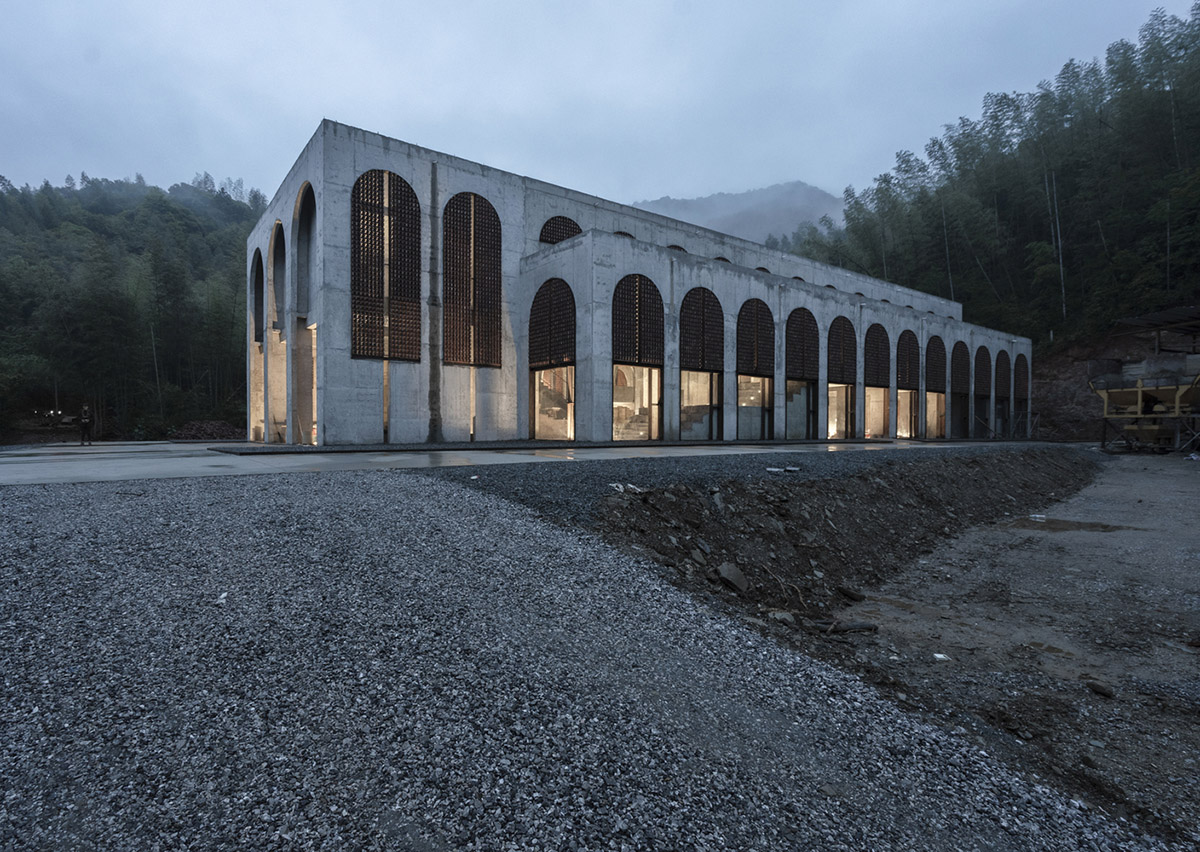
Image © Suhong Dong
The site of BingDing Wood Kiln Factory is surrounded by mountains and bamboo forests in a tranquil environment. The architects completely create a sensitive and fresh renovation throughout the building.
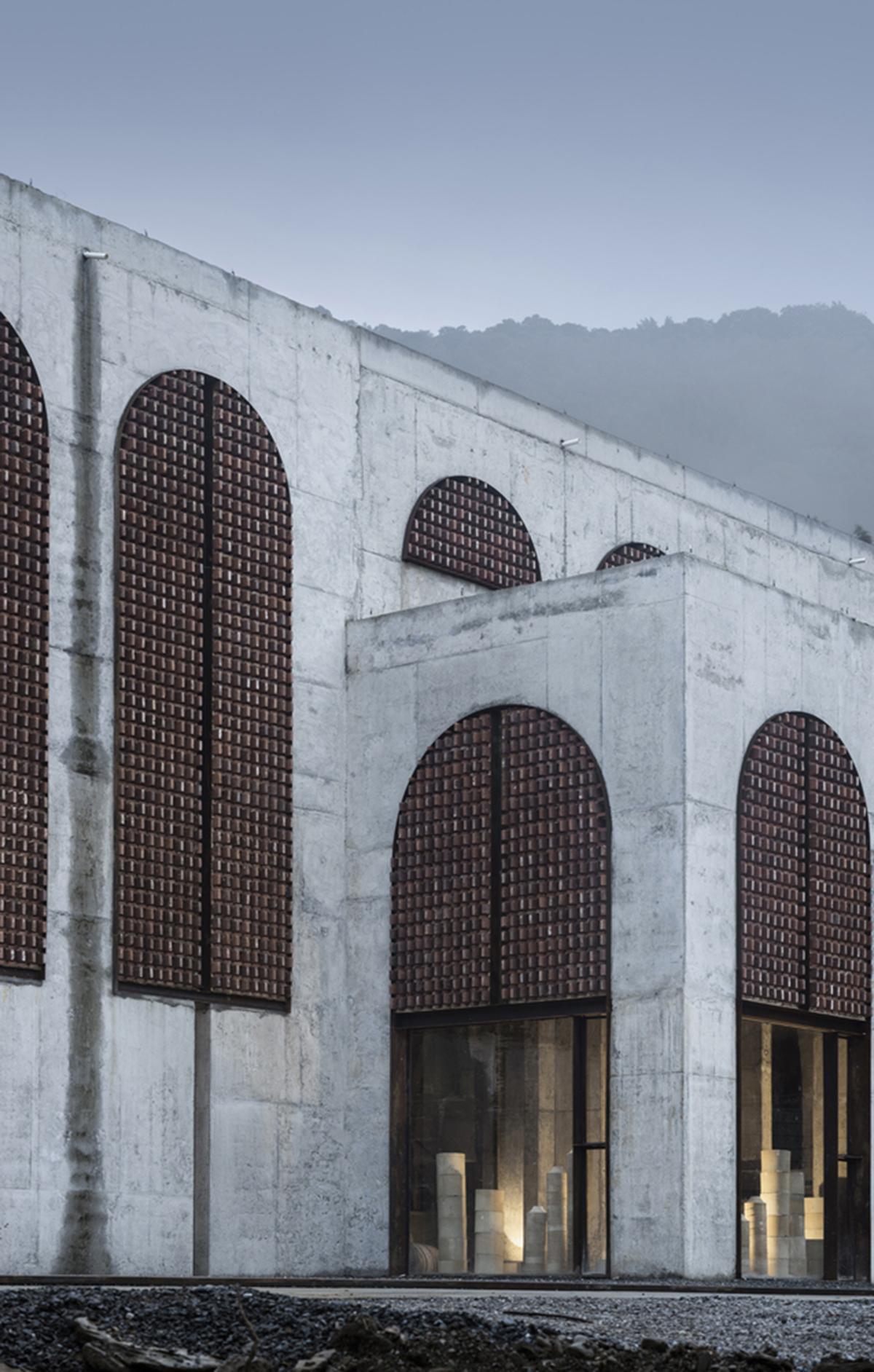
Image © Li Yao
"Jingdezhen wood kiln is named after the locals’ preference of using the Chinese “Horsetail” red pine wood as a form of fuel, and has been the symbol of the industry for nearly 2,000 years," said AZL Architects.
"Like any traditional craftsmanship that has survived over more than one millennium’s history, it is suffering from the impact of modern technology and new ways of firing."
"Due to the difficulty in controlling the wood consumption and the firing effects, the development of wood kiln is hindered. In recent years, with the widespread adoption of coal and natural gas fuels in the newer industrial technologies, as well as the impact of environmental protection requirements, wood kiln is facing a threat of extinction."
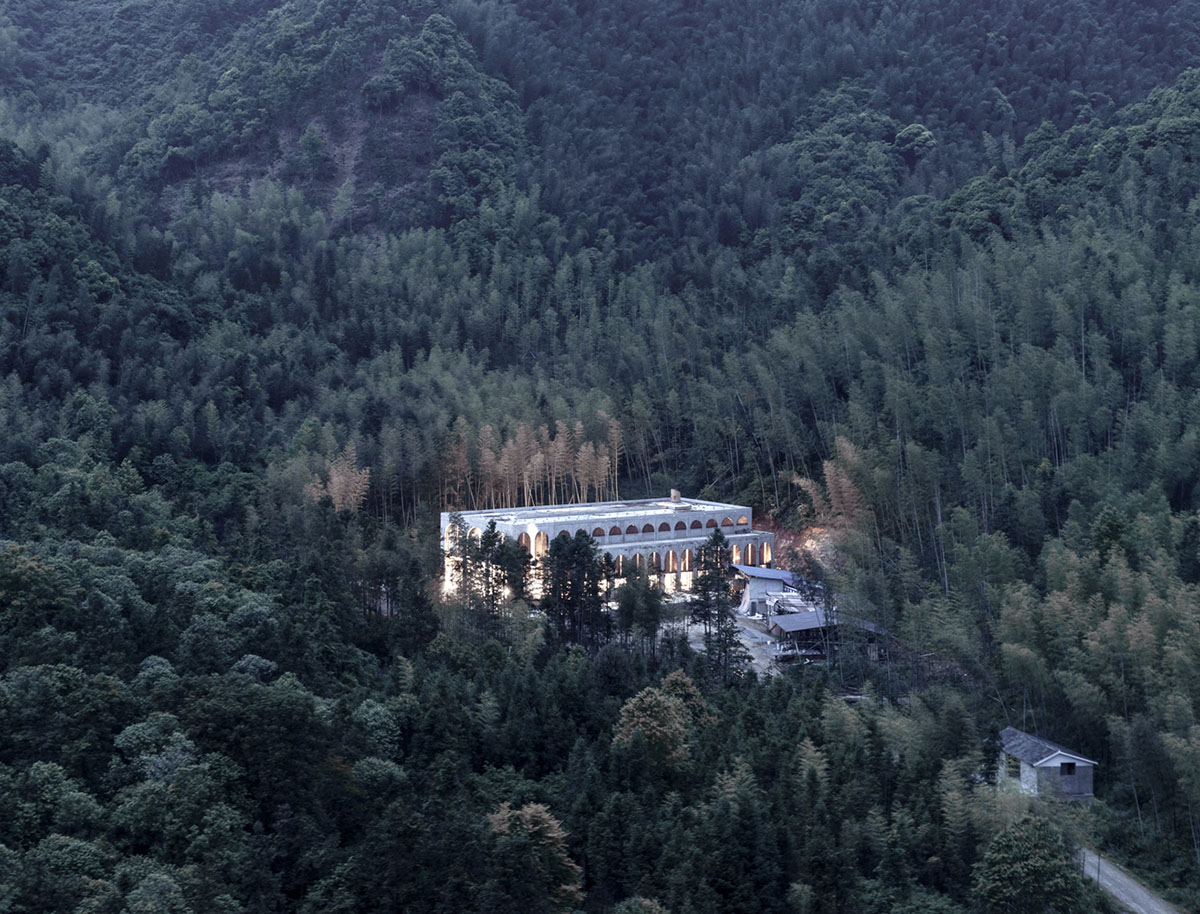
Image © Li Yao
At present, the construction technology for Jingdezhen egg-shaped wood kiln is only inherited by the 70-years-old Mr. Yu Hezhu and his three or four apprentices. This gives rise to the threat that the construction technology may soon be abandoned in the long history of humanity.
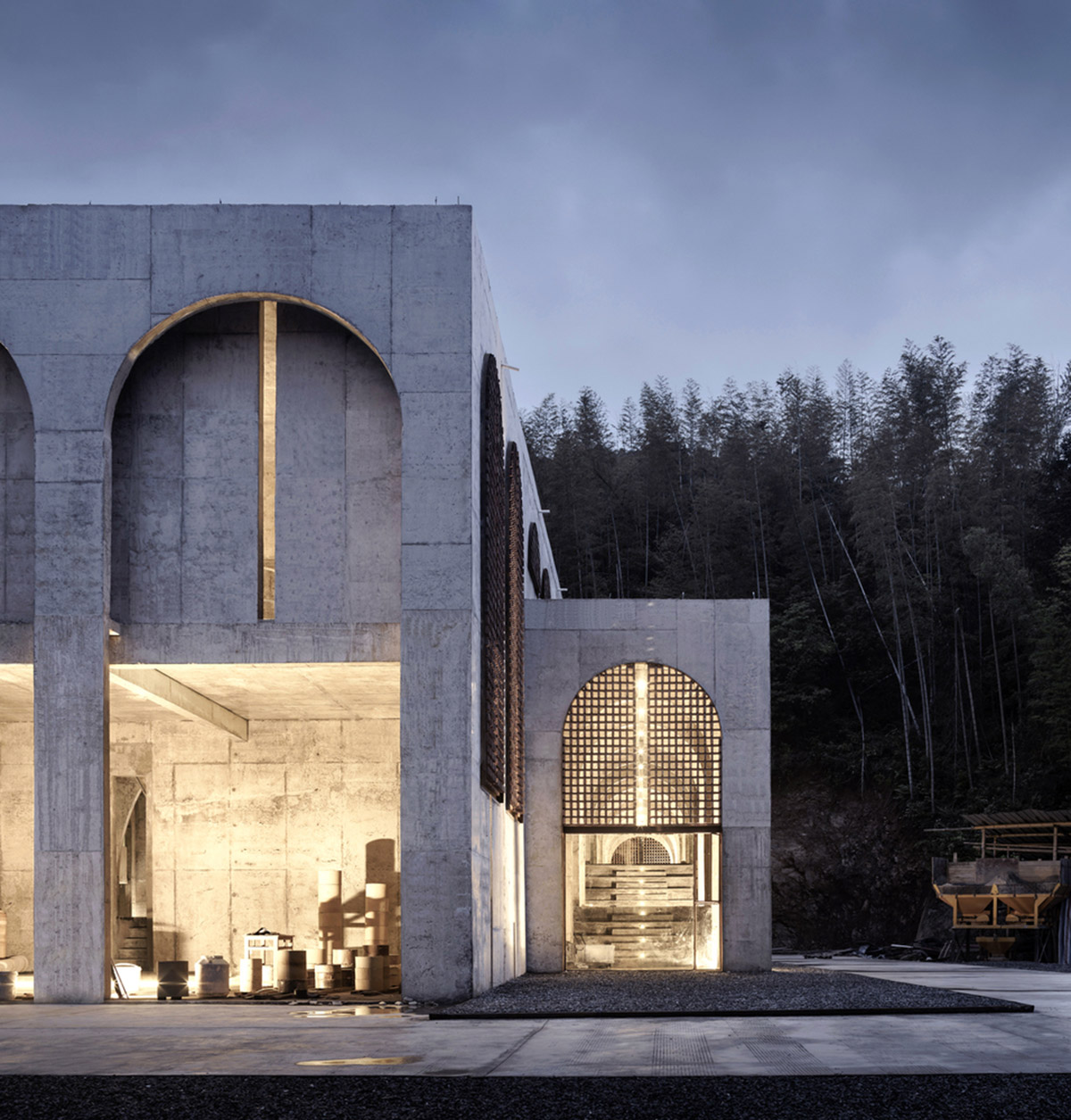
Image © Li Yao
As a practitioner zealously interested in revitalizing the traditional kiln, the project owner, Mr. Yu, began to learn from the 83-year-old master, Yu Xunquan in 2012 for kiln calcining, and then studied under the local’s only successor of the wood kiln technique, Yu Hezhu, to learn the kiln building technique in 2014.
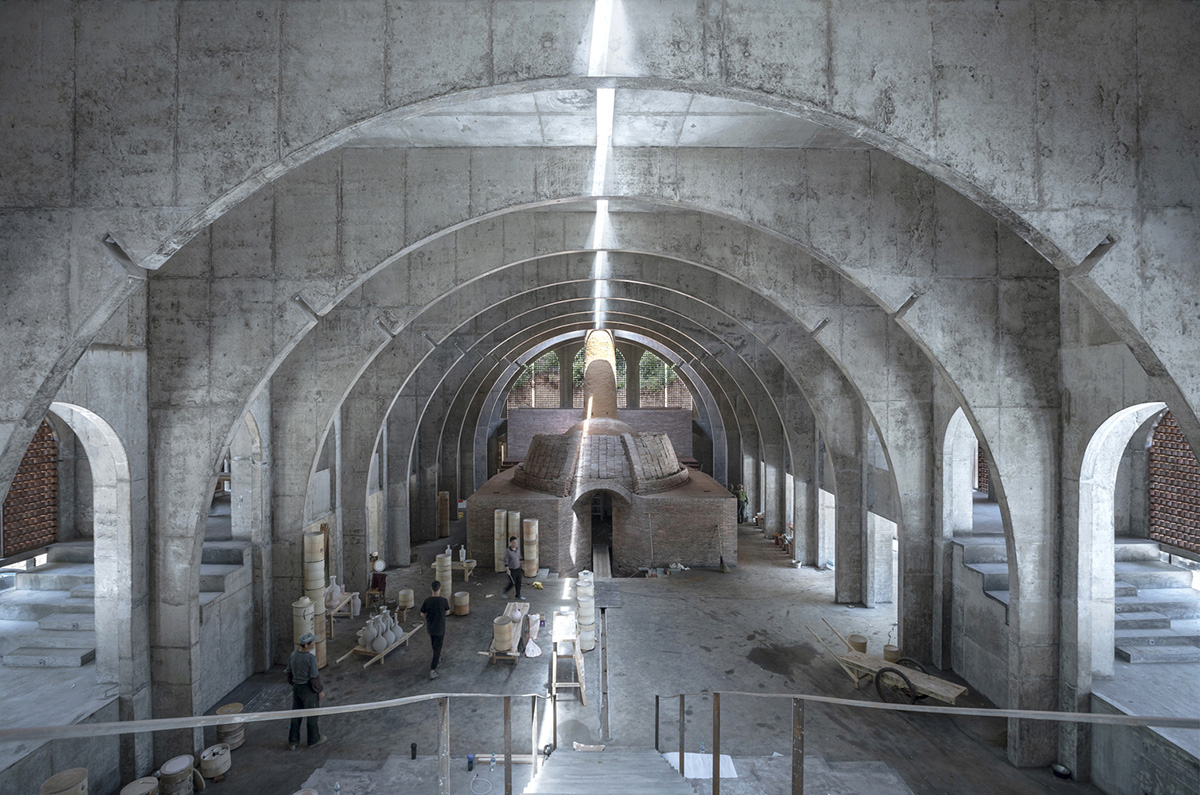
Image © Li Yao
BingDing Wood kiln factory is the masterpiece he completed with his teacher, Yu Hezhu. The construction of the complex double-curved brick arch masonry for the egg-shaped wood kiln can only be based on experience, neither there are any blueprints for reference during the entire construction process, nor is there any written documents exitsing so far.
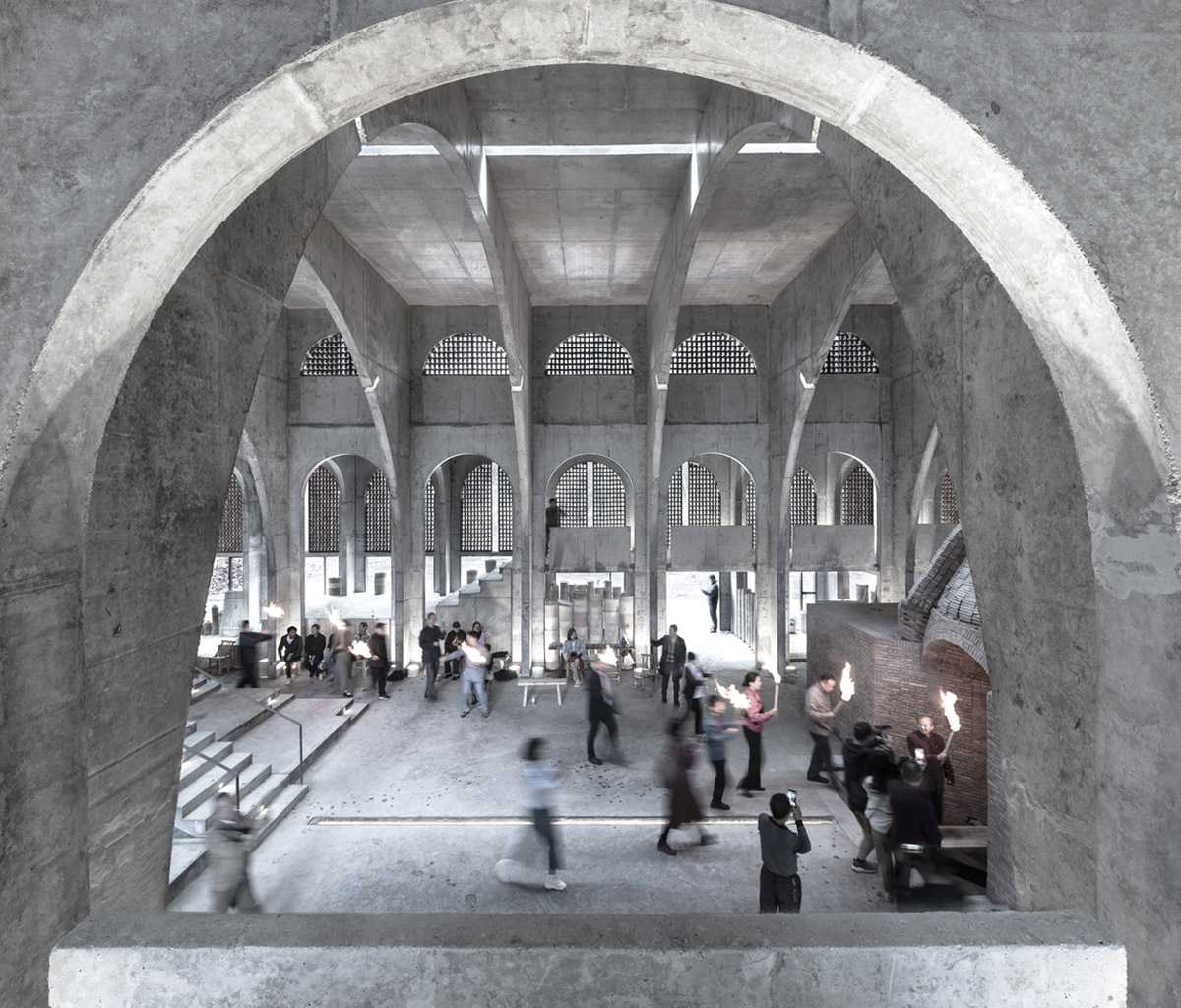
Image © Li Yao
BingDing Wood kiln consists of the kiln building and the kiln. The design revolves around the kiln as the core, coupled with the configuration of the streamlined and parallel production axis and observation axis.
The kiln building is made of a concrete arch similar to the kiln’s brick arch structure, and stresses the axial symmetry of the east and the west of the kiln. The top light belts, the wall windows, and the floor vertical joints of the kiln building are all directed to the central axis of the kiln.
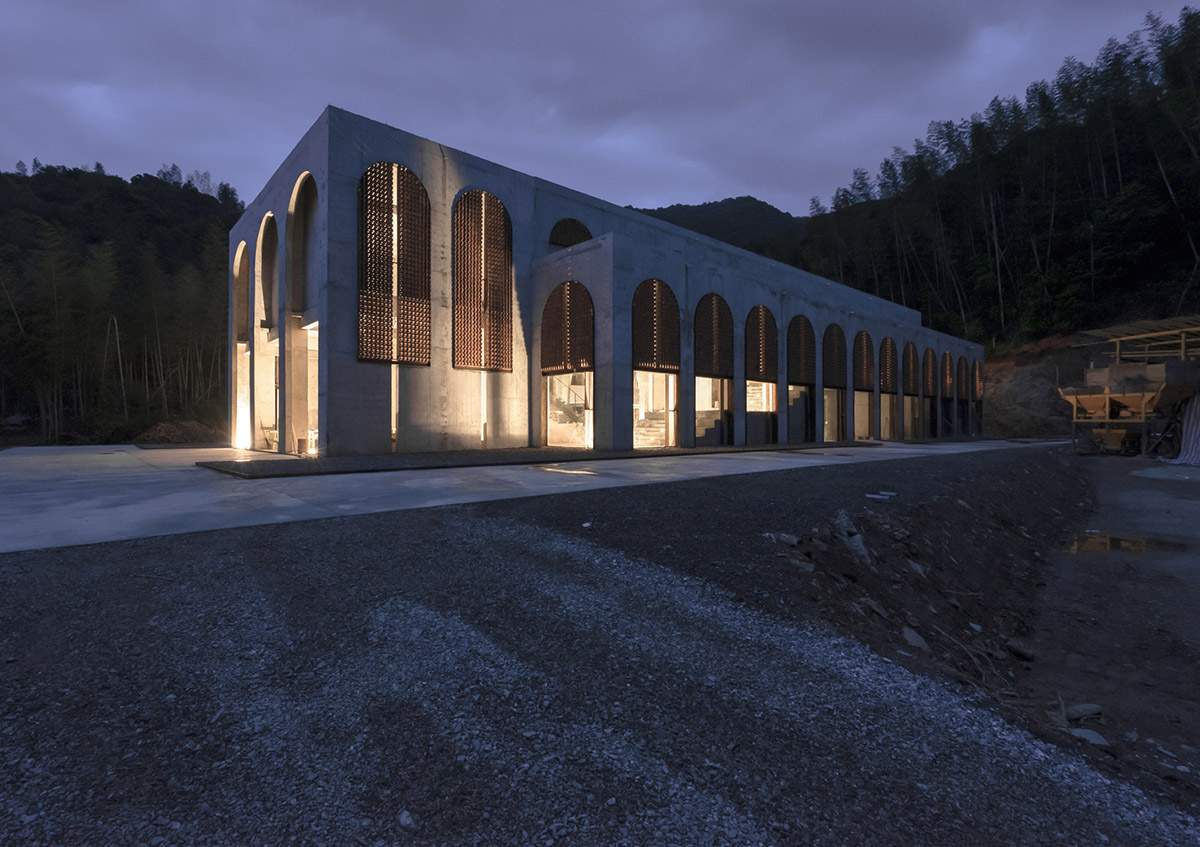
Image © Suhong Dong
The production lines of the kiln building are mainly placed on the ground floor, including the front platform of the kiln and the steps on the two sides of the stairs, which are largely used during kiln filling, kiln calcining, and kiln opening.
The rooms near the exterior windows on the two sides of the ground floor are spaces for daily work like glazing, moulding, polishing, enameling, saggering, and porcelain storage. More than 30 kiln workers work on the site during kiln filling, kiln calcining, and kiln opening, day and night. Behind the kiln is their temporary living space, including the bedroom, bathroom.
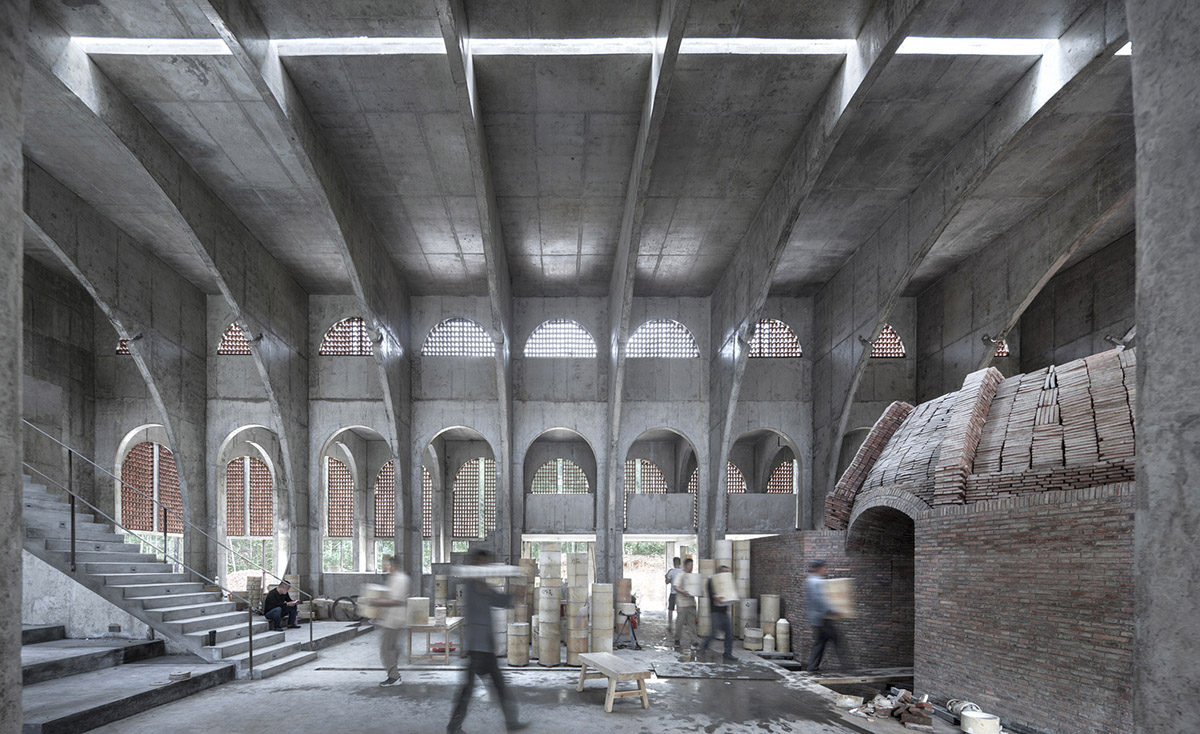
Image © Li Yao
"There will be many visitors entering and participating in the entire porcelain firing process. The observation axis on the second floor is centered toward the kiln and is encircling the building, so that the vivid spatial relationship between buildings and kiln can be perceived from different angles, highlighting the core position of the kiln," said the architects.
"The BingDing Wood kiln is a ceremonial space, where the kiln workers have a sense of pride in their work, and also where a strong sense of awe towards both the traditional crafting technique and the unremitting spirit of craftsmanship can be felt unanimously by the visitors."
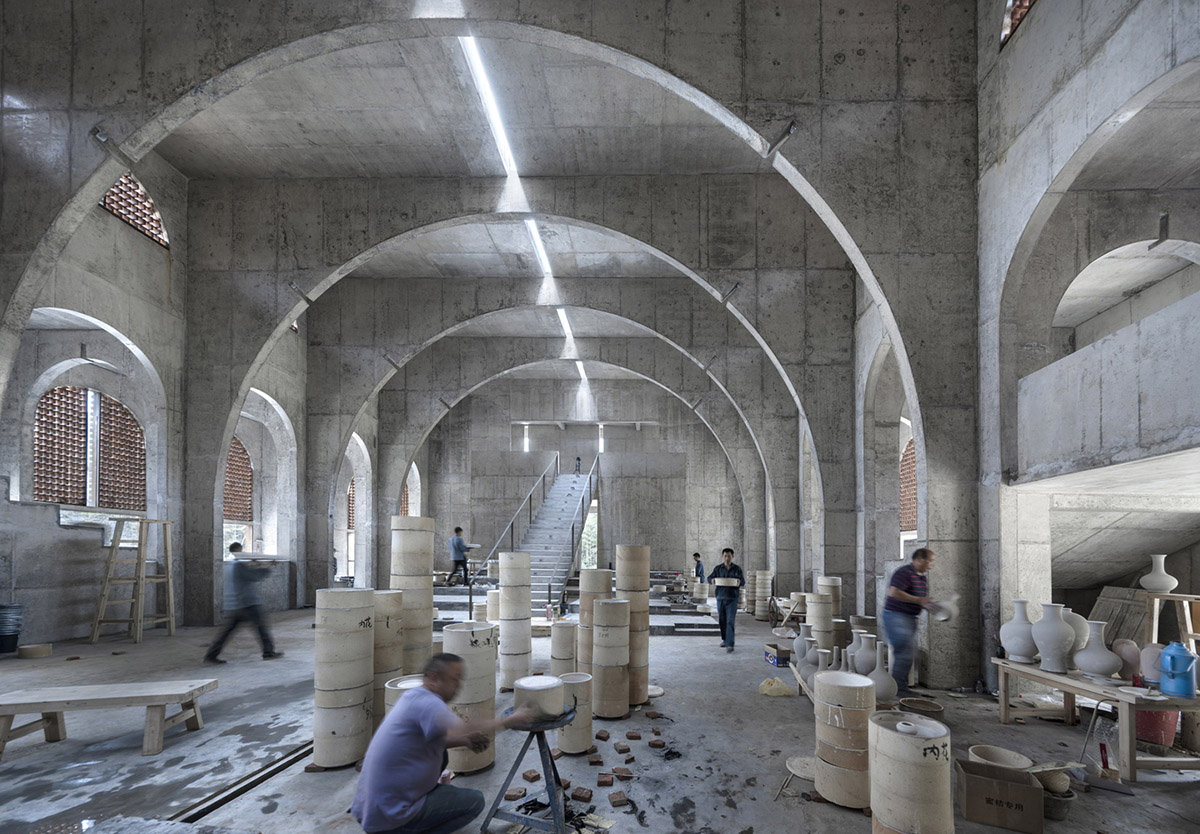
Image © Li Yao
Concrete formwork are not fixed by ordinary mounting bolt in the construction of the concrete structure in BingDing Wood kiln, but rather a supported by the steel structures outside the concrete form for casting.
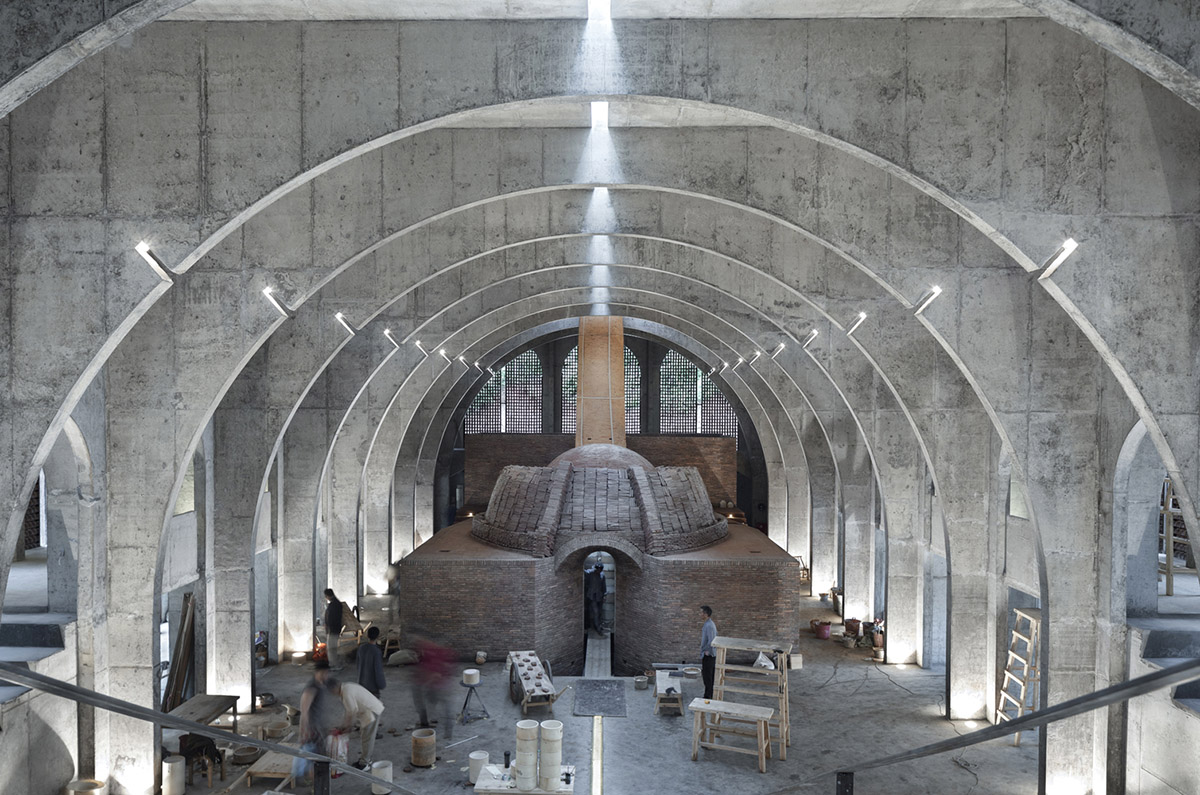
Image © Li Yao
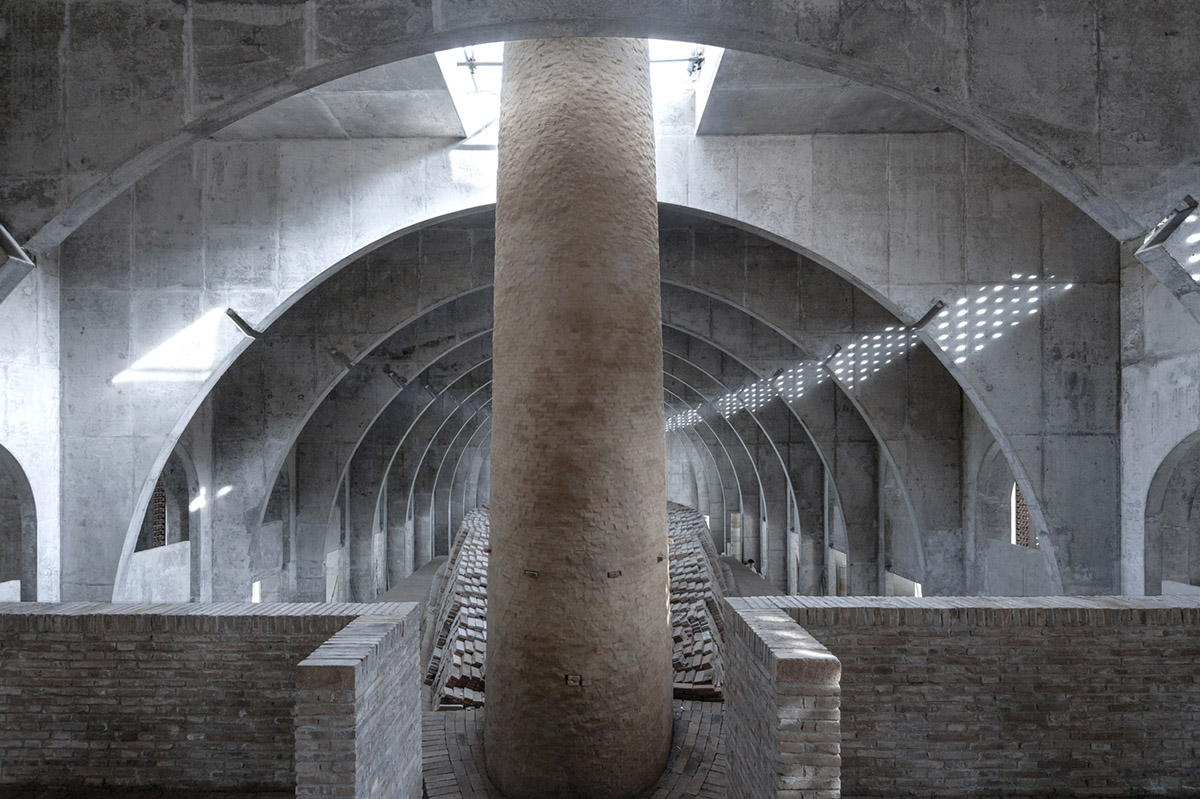
Image © Li Yao
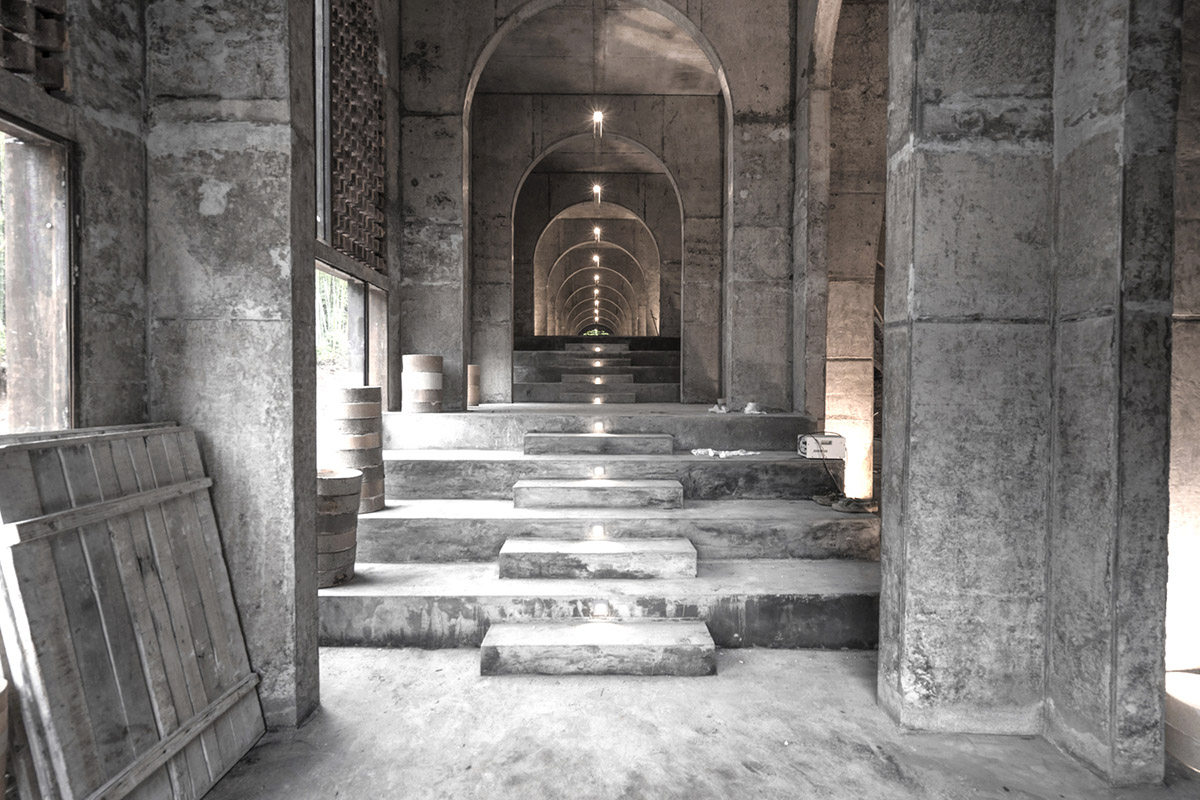
Image © Suhong Dong
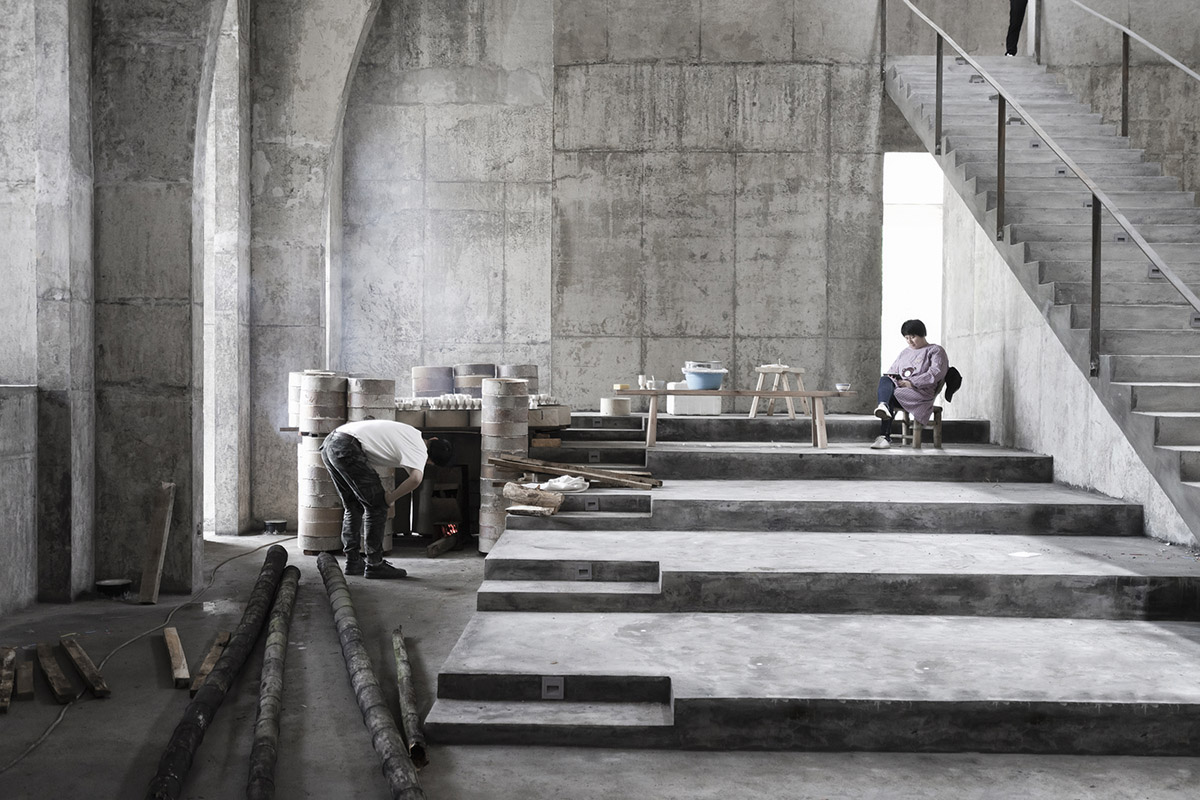
Image © Li Yao
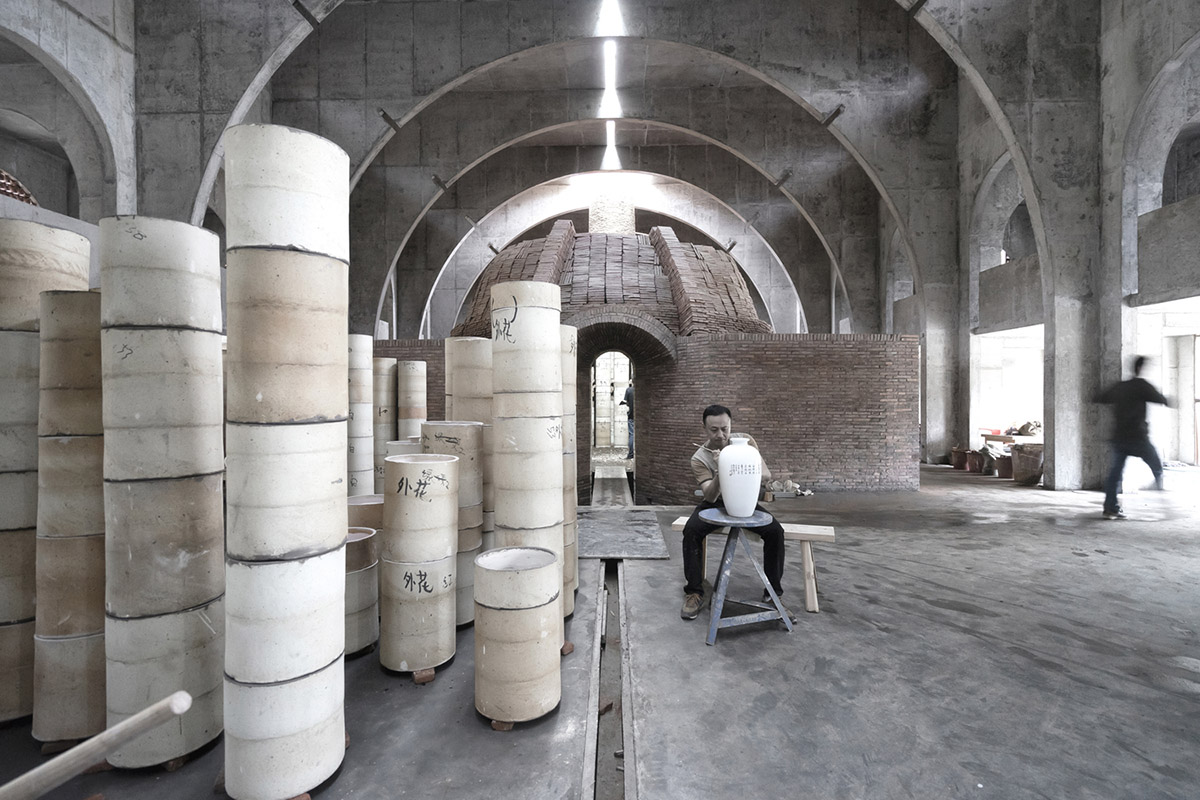
Image © Li Yao
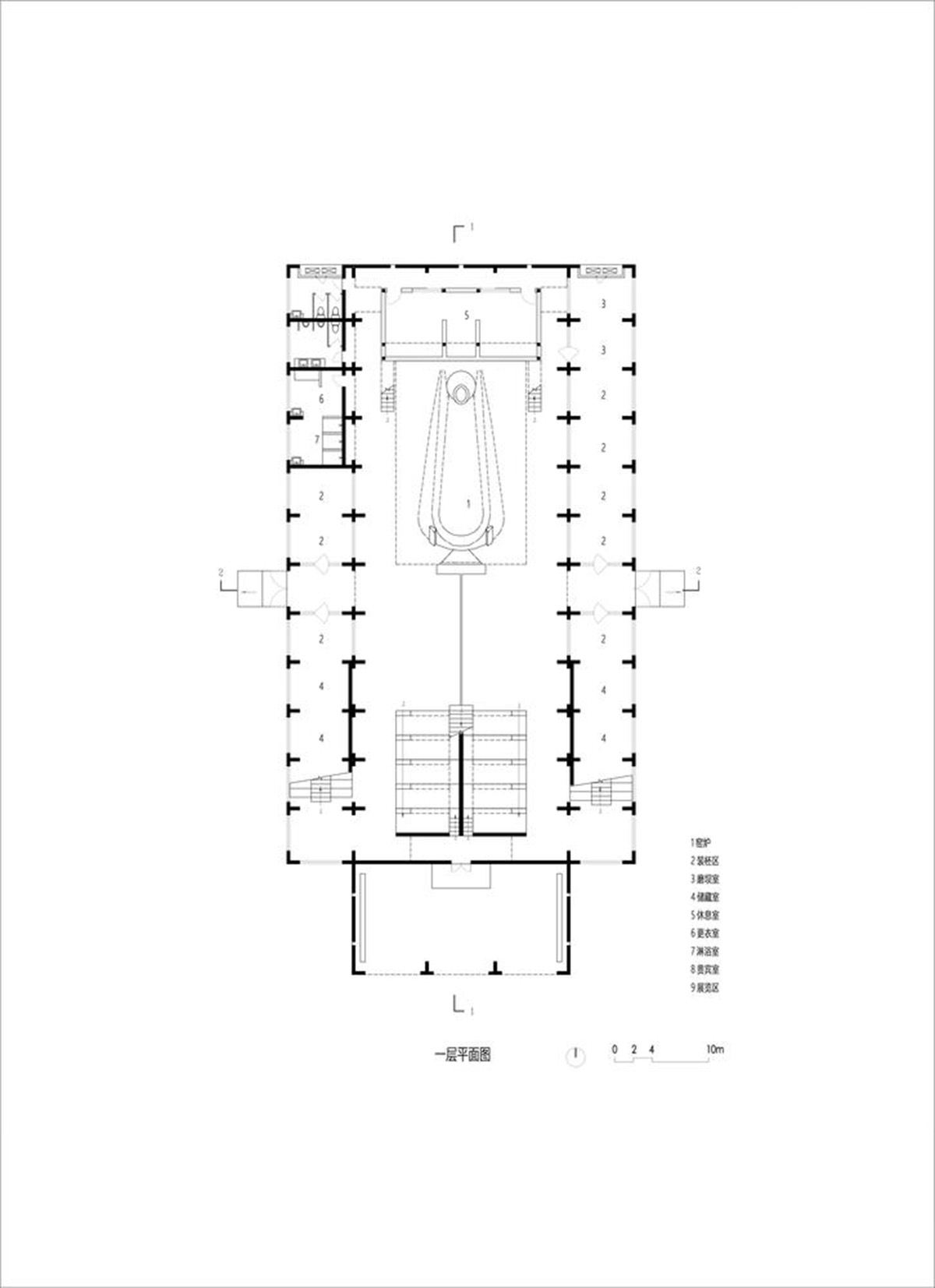
1st floor plan
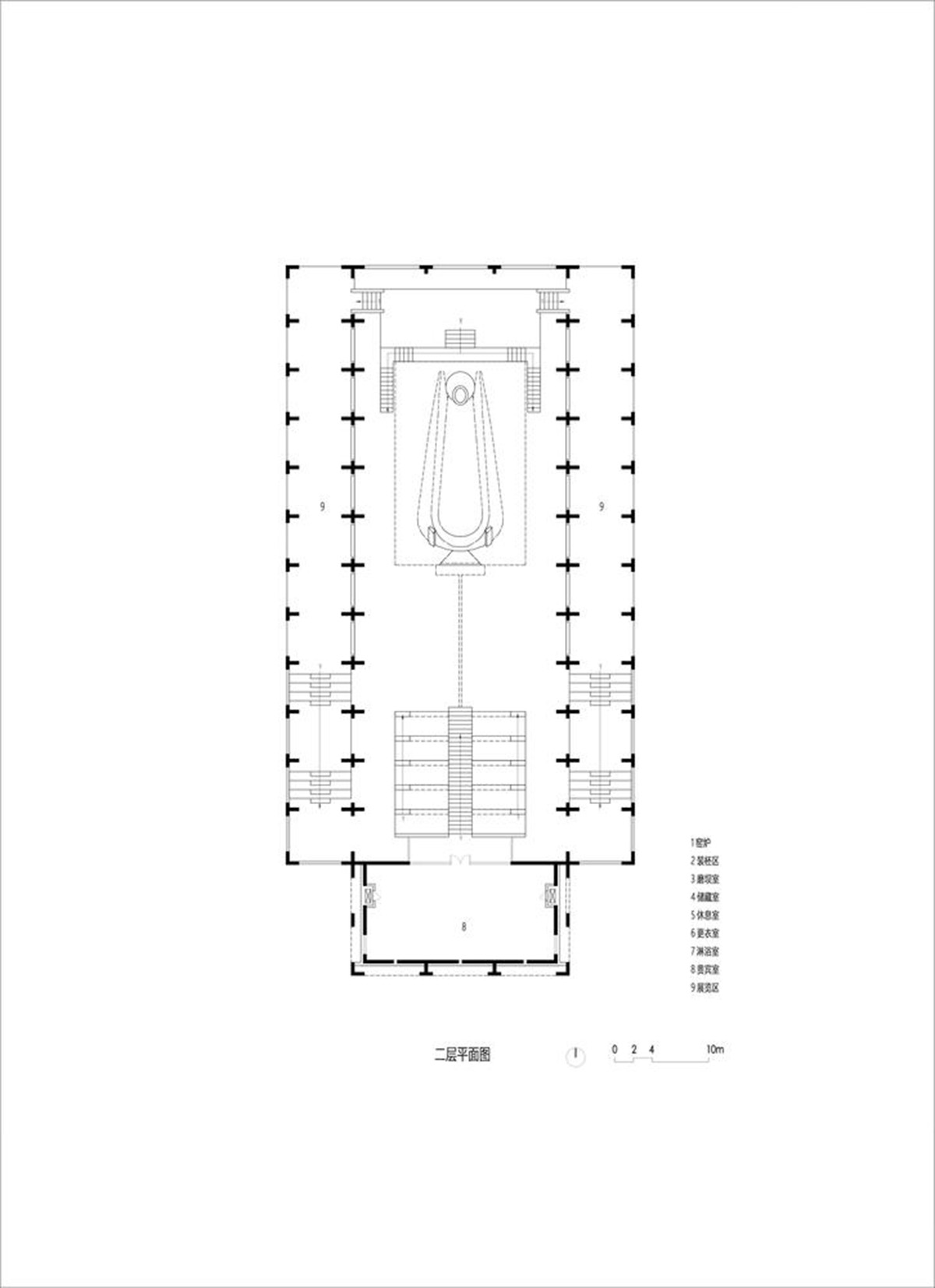
2nd floor plan
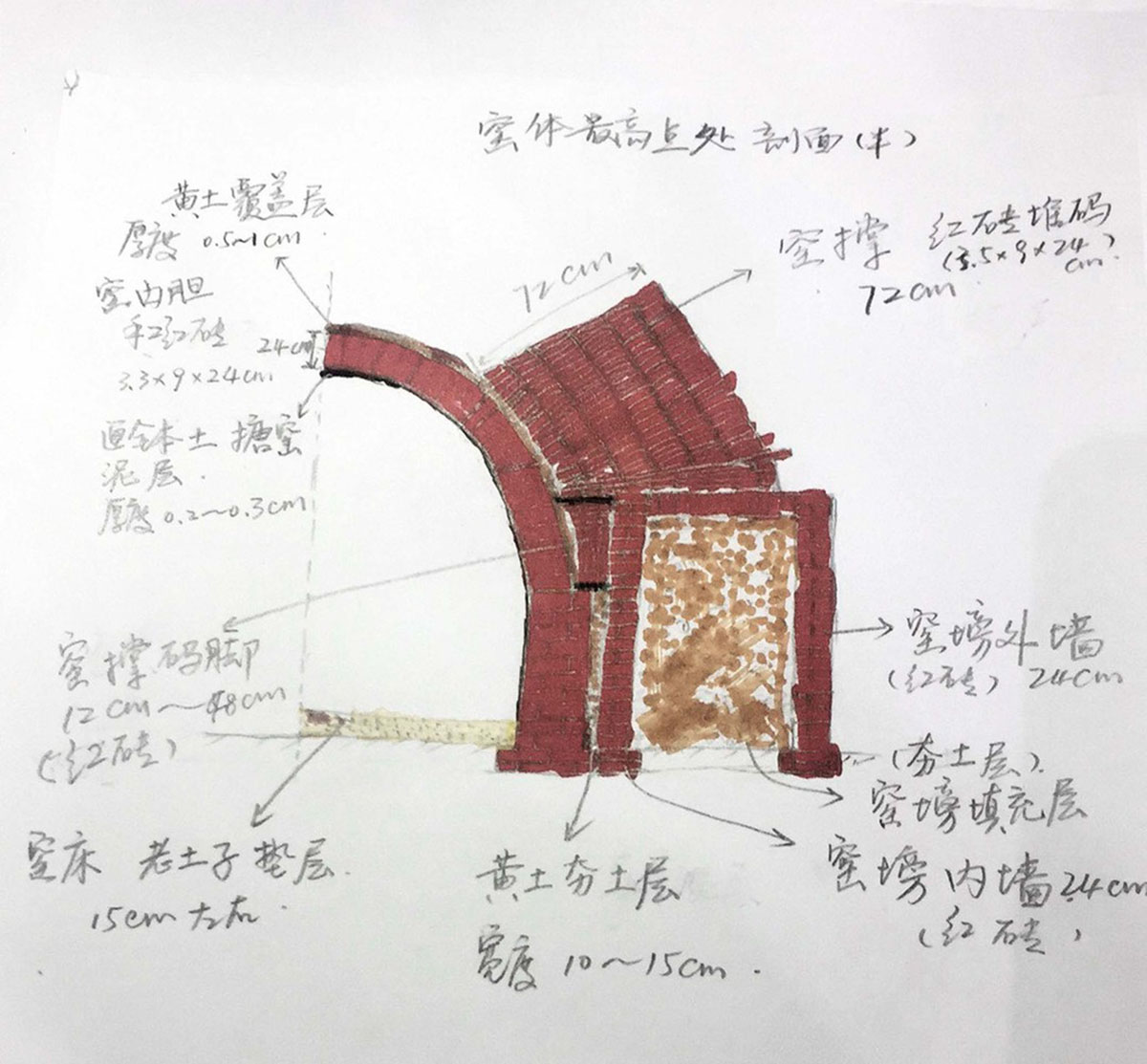
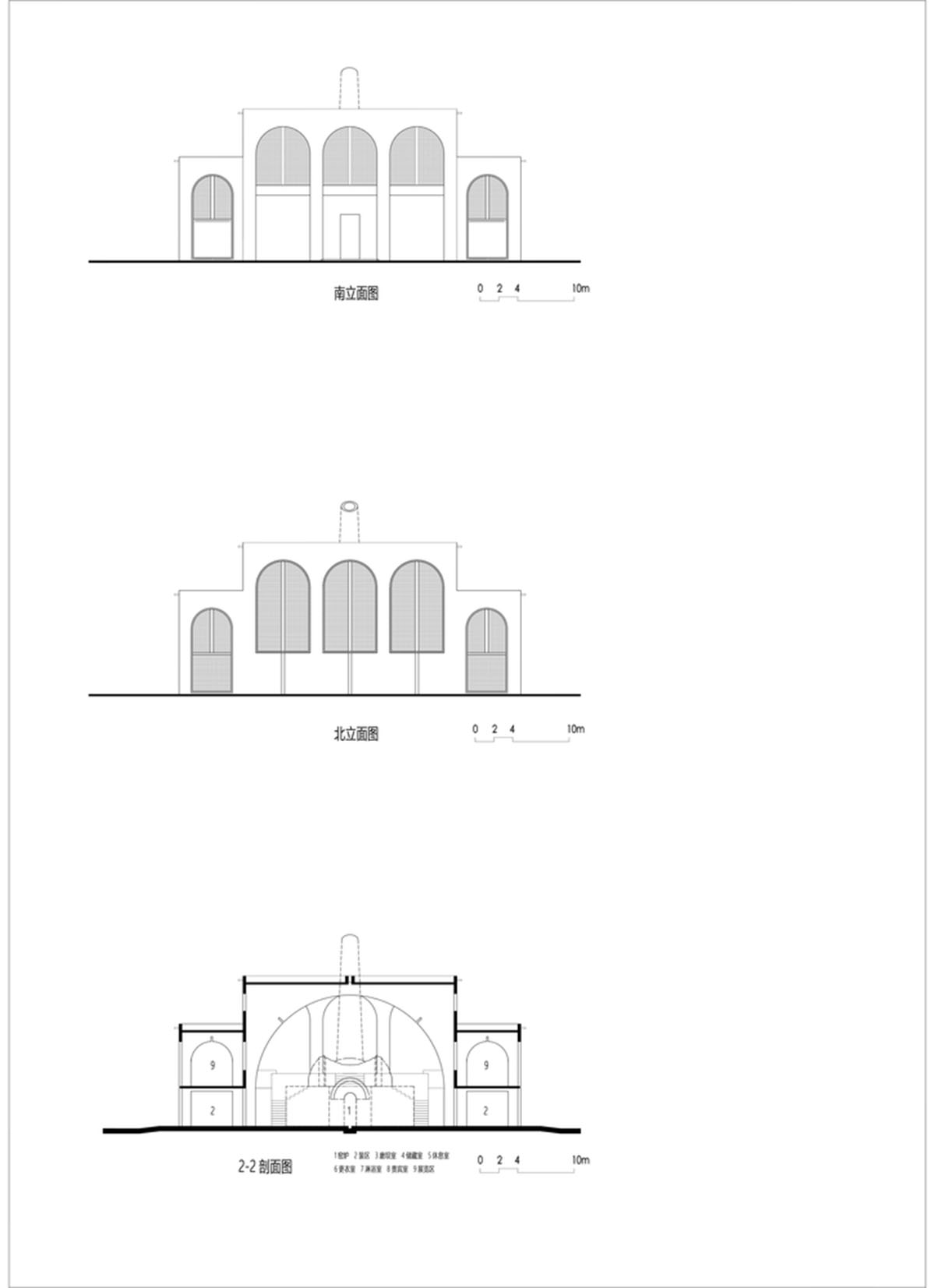
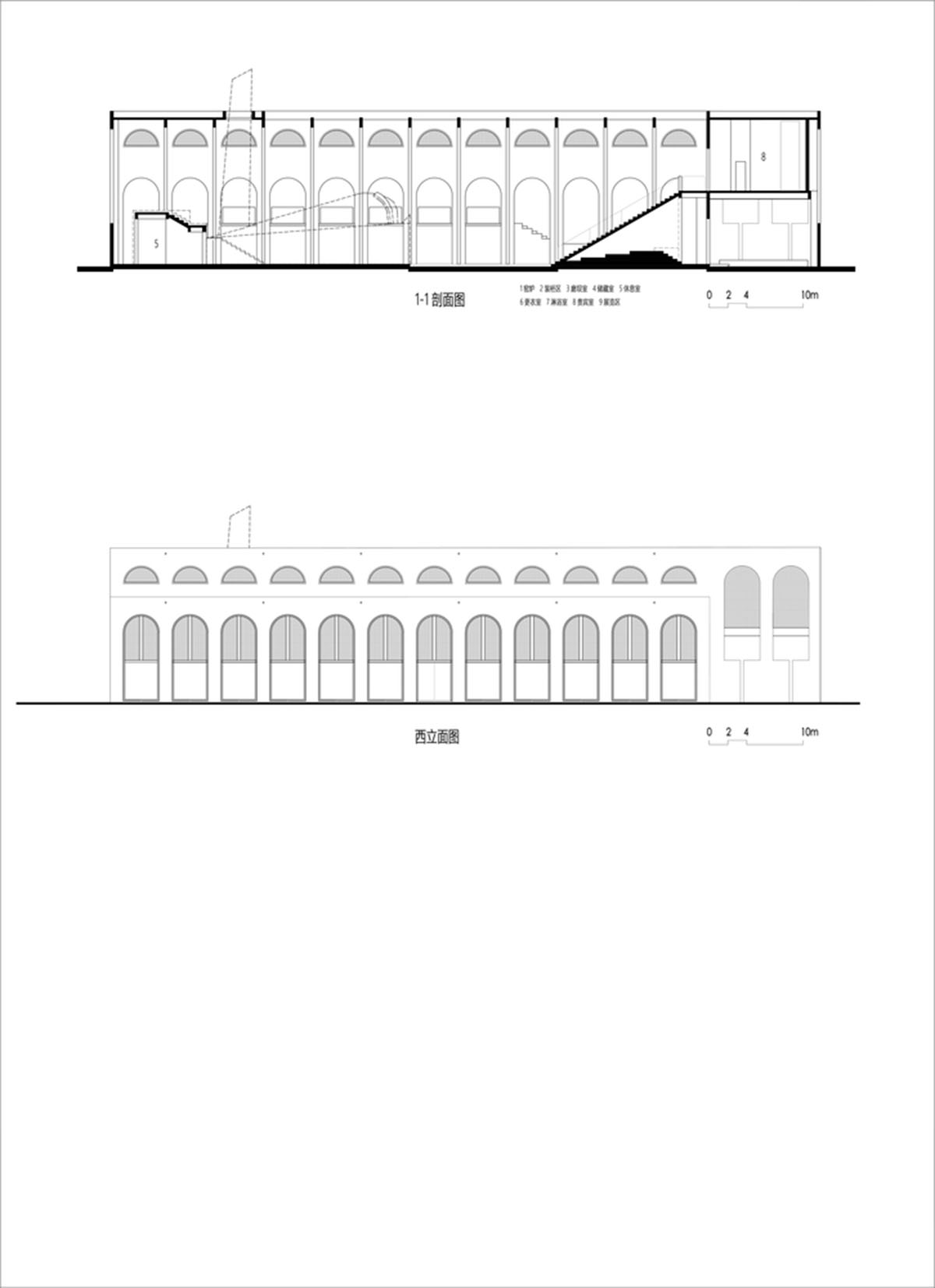
In addition to the fair-faced concrete, the main material of BingDing Wood kiln is only the kiln bricks for the kiln. The arched window holes above the second floor of the building project form patterns of light and shadows with the lattice inlaid by kiln bricks.
In the beautiful and tranquil hilly village of Qiancheng, Mr.yu and his wife as well as the local government hope to bring more attention to the Jingdezhen ceramic industry and new opportunities for rural craftsmanship inheritance and economic development, along with the revival of the wood kiln. In Chinese culture, porcelain has never only served as a necessity for daily life, but also an important container for the sentiments in life.
Top image © Li Yao
> via AZL Architects
